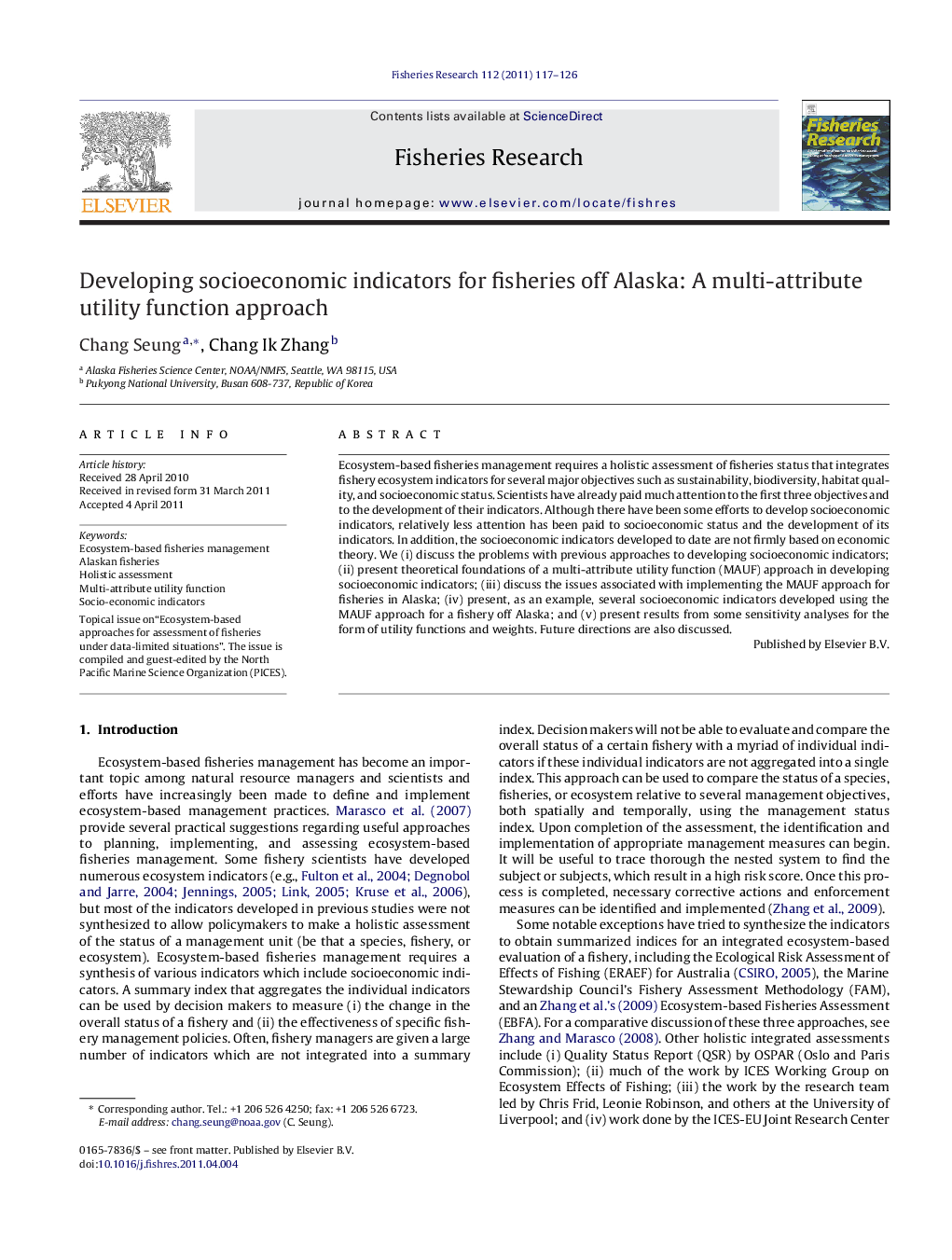| Article ID | Journal | Published Year | Pages | File Type |
|---|---|---|---|---|
| 4543530 | Fisheries Research | 2011 | 10 Pages |
Ecosystem-based fisheries management requires a holistic assessment of fisheries status that integrates fishery ecosystem indicators for several major objectives such as sustainability, biodiversity, habitat quality, and socioeconomic status. Scientists have already paid much attention to the first three objectives and to the development of their indicators. Although there have been some efforts to develop socioeconomic indicators, relatively less attention has been paid to socioeconomic status and the development of its indicators. In addition, the socioeconomic indicators developed to date are not firmly based on economic theory. We (i) discuss the problems with previous approaches to developing socioeconomic indicators; (ii) present theoretical foundations of a multi-attribute utility function (MAUF) approach in developing socioeconomic indicators; (iii) discuss the issues associated with implementing the MAUF approach for fisheries in Alaska; (iv) present, as an example, several socioeconomic indicators developed using the MAUF approach for a fishery off Alaska; and (v) present results from some sensitivity analyses for the form of utility functions and weights. Future directions are also discussed.
► Multi-attribute utility function approach to socioeconomic indicators is presented. ► Issues associated with implementing the approach for fisheries are discussed. ► Several socioeconomic indicators are developed using the approach for a fishery off Alaska.
